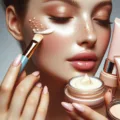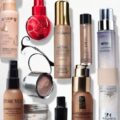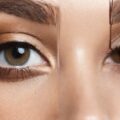Blush can be the unsung hero of your makeup routine, often overlooked but pivotal in creating a healthy, radiant complexion. Whether you’re a makeup novice or a seasoned pro, understanding the nuances of blush can elevate your beauty game. From selecting the perfect shade to mastering the art of application, this guide will walk you through everything you need to know about blush.
Choosing the Right Blush for Your Skin Tone
One of the most crucial steps in blush selection is finding a color that complements your skin tone. For fair skin, soft pinks and peaches can create a natural-looking flush. Olive skin tones are complemented by warmer shades like mauve or apricot. Darker complexions can handle richer tones such as deep fuchsia or terracotta.
Powder, Cream, or Gel: Blush Formulas Explained
Blush comes in various formulas, and the right one for you can depend on your skin type and the finish you desire. Powder blushes are great for oily skin and provide a matte finish. Cream blushes work well for dry or mature skin, offering a dewy glow. Gel and liquid blushes are perfect for a sheer, natural look and are versatile for all skin types.
Application Techniques for a Flawless Glow
Applying blush is an art that can accentuate your best features. For a natural look, focus on the apples of your cheeks and blend upwards towards the temples. If you’re aiming for a more sculpted appearance, apply the blush slightly below the cheekbones and blend upwards. Remember, the key is to blend, blend, blend to avoid harsh lines.
Blush Dos and Don’ts
Do: Choose a blush that mimics your natural flush.
Don’t: Apply too much product – you can always add more if needed.
Do: Consider your other makeup – coordinate your blush with your lip and eye colors.
Don’t: Use dirty brushes, as they can harbor bacteria and affect application.
Long-Lasting Blush Tips
To ensure your blush stays put throughout the day, start with a clean, moisturized face. Use a primer to create a smooth canvas. If you’re using a powder blush, setting it with a translucent powder can help it last longer. For cream or gel blushes, layering a bit of powder blush on top can also add to its longevity.
FAQ – Blush 101
What blush color is most universally flattering?
A muted rosy pink is often considered universally flattering and can work for a wide range of skin tones.
Can blush be used for more than just cheeks?
Absolutely! Blush can be used to add color to the eyelids or a hint of tint to the lips for a monochromatic makeup look.
How do I know if I’ve applied too much blush?
If your blush looks unnatural or overly pronounced, it’s likely too much. Use a clean brush or beauty sponge to blend it out, or apply a little foundation over the top to soften the color.
What’s the best way to apply cream blush?
For cream blush, use your fingers to dab the product onto your cheeks and blend with a sponge or stippling brush for a seamless finish.
Is there a difference between blush for day and night looks?
Daytime blush typically involves lighter, more natural shades for a fresh look, while night looks can sustain deeper or more vibrant colors for a dramatic effect.









